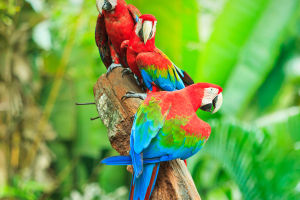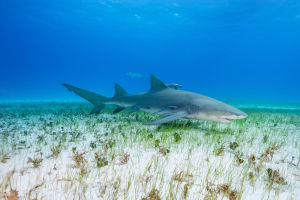Next time you stroll through a city park and see a squirrel darting across a bench or pausing to bury a nut near your feet, don't just think, "Cute."
That tiny animal may be influencing the very soil beneath you, the growth of future trees, and the balance of urban biodiversity.
Squirrels, especially in urban parks, do far more than entertain us with their bushy tails and acrobatics. They're playing an active, even crucial, role in shaping city ecosystems.
Let's take a closer look at what makes them ecological powerhouses hiding in plain sight.
Squirrels: Unintentional Forest Farmers
What many parkgoers don't realize is that squirrels are accidental reforesters. Their famous nut-burying behavior doesn't just prepare them for winter—it plants trees.
1. Cache-and-forget strategy
Squirrels bury thousands of seeds and nuts every fall to create food caches. But here's the kicker: they don't remember all of them. In fact, a significant portion is never recovered. Those forgotten acorns? Many grow into saplings.
Oak trees, hickories, and beeches often owe their spread to squirrel activity. Urban parks rely on this hidden service to regenerate their tree canopy without human planting.
2. Seed dispersal far from parent trees
Instead of just dropping nuts near the tree they came from, squirrels scatter them—often hundreds of feet away. This distance helps prevent diseases and pests from clustering, promoting healthier tree populations.
So while they don't do it on purpose, squirrels are basically unpaid forest gardeners.
Soil Engineers with a Secret Impact
Squirrels are constantly digging, but what's often overlooked is how their actions change the soil itself.
1. Aerating compacted soil
Urban parks suffer from soil compaction—people walking on grass, vehicles, and weather all press the ground flat. Squirrel digging breaks that up. It allows air and water to reach deeper, which improves root growth for plants.
2. Nutrient redistribution
As squirrels bury food items across their territory, they unintentionally redistribute nutrients. When a nut decomposes, it releases minerals like phosphorus and potassium back into the soil, enriching areas far from the tree's base.
You could almost call squirrels the composters of the urban wildlife world.
Masters of Adaptation
What's particularly impressive is how well squirrels have adapted to urban life. While many animals struggle with the noise, traffic, and constant human presence, squirrels have found ways to thrive.
1. Adjusting to human feeding patterns
In many cities, squirrels have shifted part of their diet based on what humans leave behind—birdseed, discarded food, or deliberate handouts. But they're still selective: research shows they often favor natural foods over processed ones, even in parks.
2. Nesting in man-made structures
While tree cavities are ideal homes, urban squirrels also build dreys (nests) in building crevices, rooflines, and even traffic lights. They're not just surviving the city—they're working it to their advantage.
Not Just Cute—But Socially Smart
One of the lesser-known aspects of squirrel life is their social intelligence, especially in high-density areas.
1. Deceptive caching
If a squirrel notices another watching it bury a nut, it may fake a burial to throw off the spy. This level of deception suggests cognitive abilities like planning and awareness of others' intentions—rare traits in the animal kingdom.
2. Communication through tail signals
Squirrels use their tails for more than balance. The way they flick or curl them can signal aggression, alarm, or interest. In crowded parks where quick decisions matter, this kind of non-verbal communication helps them avoid conflict.
Do Squirrels Ever Cause Problems?
They're helpful, yes—but not always harmless. Urban ecologists do note a few downsides:
1. Overpopulation without predators
In parks where predators like hawks or foxes are absent, squirrel populations can boom. This can lead to stripped bark, damaged young trees, and even turf destruction.
2. Power grid issues
Believe it or not, squirrels are one of the top non-human causes of power outages in the U.S., often chewing through wires or causing short circuits on transformers.
Still, most of these issues are manageable with better planning, like wildlife-proof infrastructure and natural predator corridors.
What Can You Do as a Park Visitor?
You don't have to be a wildlife expert to support your local squirrels—and the ecosystem they're part of.
Here's what helps:
1. Resist the urge to overfeed – While the occasional peanut isn't catastrophic, regular feeding can reduce foraging instincts and unbalance diets.
2. Protect tree diversity – Join local planting efforts that support a range of native trees. Squirrels prefer some species (like oaks), but a mix strengthens the ecosystem.
3. Observe, don't interfere – If you see squirrel nests or juvenile squirrels in spring, keep your distance. Most "rescues" are unnecessary and stress the animals.
So the next time you see a squirrel scampering across your local park, ask yourself: Is it just being playful, or is it replanting a future forest?
Turns out, the truth is somewhere in between.
Either way, squirrels are a reminder that even small creatures in big cities can play big roles. Maybe we should give them more credit—and a bit more space to work their quiet magic.


